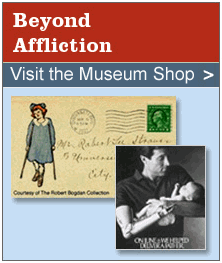Education: Lesson Details
Overview
During the 1840s and 1850s, Dorothea Dix was an active advocate for Americans with cognitive and psychiatric disabilities. Dix’s advocacy was particularly notable given that the mainstream cultural ideology of the era dictated that woman’s sphere was the private world of home and family. Dix’s efforts to improve care for people with mental disabilities resulted in a number of legislative victories at the state level, but despite years of lobbying in Washington, D.C., she ultimately failed to obtain federal funding for asylums. Nonetheless, she remains a significant historical figure for several reasons. Dorothea Dix was among the first investigative reporters in America. Her dramatic accounts of abuse and neglect in jails and almshouses had no precedent and made her a political firebrand. In addition, Dix achieved a level of fame and influence reached by very few women of her time, despite being a woman from an unstable family who never married. Finally, her career illuminates the nature of the rhetoric surrounding disability in the nineteenth century. Today’s disability advocates often use the language of civil rights. Dix took another route to achieve the political outcomes she sought. She appealed to public benevolence.
This lesson deals with gender and what it meant to be a politically active woman in the United States in the middle of the nineteenth century. This lesson also addresses the power of Dorothea Dix’s rhetoric and the ways in which she was able to project moral authority, given the cultural and political climate of her time. Students explore both the opportunities and the limitations in women’s lives, all within the framework of disability history.
The materials in this lesson center on matters of voice. In the 1840s and 1850s, Dix, as a woman, was not allowed to speak directly before legislative bodies. Yet, she made her distinctive voice heard. Dix used her gender to establish authority over moral issues and thereby attract powerful male allies to her cause. Dix’s adroitly combined her particular gendered identity with a powerful religious rhetoric to bring about practical political change. “Dorothea Dix and the Politics of Gendered Advocacy” can augment any classroom exploration of reform movements and/or women’s lives in the decades before the Civil War.
Questions To Consider
1. What does Dix’s language suggest about the meanings of disability in antebellum America? How does she define people with disabilities in relation to her own self-definition as a woman?
2. Was Dix’s "womanhood" a help or a hindrance in achieving her reform goals?
3. Identify the conditions in antebellum America that made asylum reform possible. Why didn’t this reform take root earlier?
4. What does the life and writings of Dorothea Dix say about the connections between religion and gender roles in nineteenth-century America?






